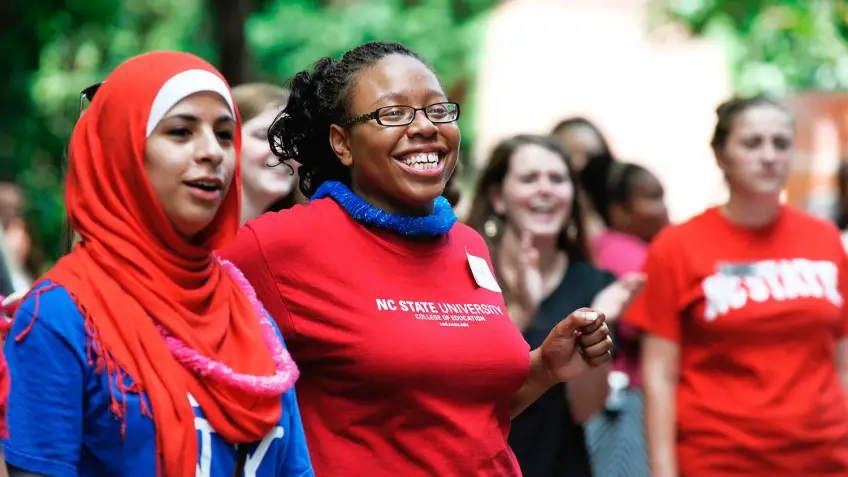Popping the Bubble
To encourage heterogeneity, an open invitation is not enough.
By Deshia Dunn, Central Michigan University
Though I imagine the problem is universal, I have noticed at my school an ironic lack of diversity in organizations and events whose sole purpose is, well, to promote diversity.
Oftentimes, organizations celebrating Asian, African-American and Middle Eastern heritage are ethnically homogeneous in their, despite the fact that they seek to foster heterogeneity. While panel discussions and guest speakers attempt to explore topics pertaining to issues of diversity, such as race, religion and politics, they lack the type of audience who would benefit from listening in the first place.
This lack of diversity in diversity-oriented organizations speaks to a greater problem: An underlying disinterest in learning about the world outside oneself. Though this type of self-absorption is negative in its egocentricity, the real danger comes from how it distorts your perception of the world, creating a disconnect between how you see things and how they really are.

During this semester, an incident of anti-Semitism occurred on my campus. A few days afterwards, one of my professors decided to start a conversation with our class about the hate speech, prefacing the discussion with an anecdote about the first day she attended an African-American history course at her university.
She said that her professor had passed around a leather-bound book to the students, allowing each the chance to closely examine it. The professor then announced, after the book had circled the room, that it had been bound in the skin of a slave. After the shocking announcement, she then told her students that she respected anyone who decided to leave the course.
The point of the anecdote was not the skin-bound book. Instead, the point was that the professor wanted to create a space explicitly for students who wanted to open themselves up to a new learning experience. She wanted her class to experience discomfort, because she felt that anyone afraid of being uncomfortable was not committed to moving beyond the comfort of their preexisting knowledge.
When discussing complex issues, it is important that all participants are ready to feel uncomfortable. Without a group vulnerability, individuals will hesitate to express themselves unguardedly. If someone fears being misunderstood, while someone else fears giving offense, neither will be able to grow. In order to foster a dynamic of empathy, it is important to create spaces respectful to the person expressing themself and the person listening, and discomfort is part of that process.
Though it is disconcerting to see a lack of diversity in diversity-oriented programs, it’s not surprising; people like to surround themselves with like-minded people, and those with similar cultural upbringings will relate to each other more easily.
I had a Latino high school teacher admit to our class that he found himself subconsciously gravitating toward the only other minority staff member in the teacher’s lounge. It’s not a bad thing. The challenges you face are easier to express to someone who has faced a similar experience.
For example, black fraternities were established on campuses in the early twentieth century as a way of extending their support to each other. Offering black students a safe space to express themselves, one rooted in the shared experience of what it meant, and continues to mean, to be an African-American man, has enabled them to succeed socially and academically.
Inherently, these organizations are a product of the challenges faced by each individual, and they exist first and foremost as a place to feel connected to others who share similar experiences. Alone, each of their stories is easier to discredit as an isolated incident, but being a part of something bigger makes your voice harder to ignore.
However, although these groups cultivate an environment of safety, from the outside looking in, they can seem intimidating—perhaps even exclusive—which is why it is necessary to reach out and welcome others. Diversity is a two way street.
More often that not, the biggest inhibitor of diversity is fear. Part of learning is accepting that your worldview needs a daily refresher, that it should receive input, recalibrate and then restart the next day.
Unfortunately, the effort of remaining open-minded can be exhausting, which makes the temptation of shutting down so tempting. As a result, people can choose to remain entrenched in beliefs they know are wrong, as a way of escaping the tedium of updating them for accuracy.
At the same time, the struggles you face are intimate. They represent the reasons behind your insecurities, and so few people are willing to share them undeservedly. Given the difficulty it takes to accept new beliefs, and the vulnerability it takes to admit your own, it’s no wonder that cross-cultural dialogue is so difficult.
It is the act of accepting someone else’s reality and figuring out how it fits into your own. It may make you uncomfortable, but that discomfort turns to growth, which is far more valuable than the security of indifference.

















